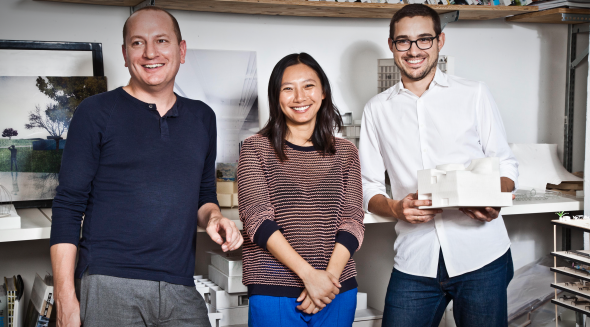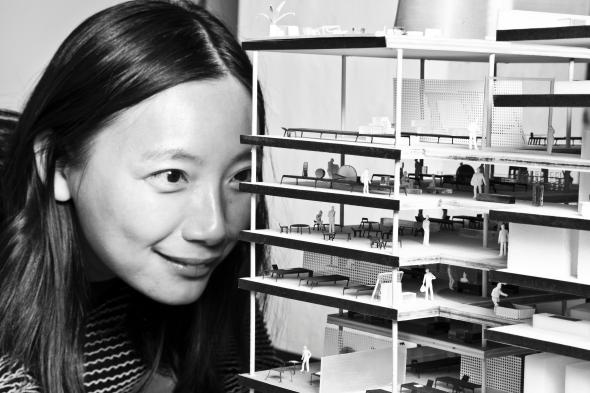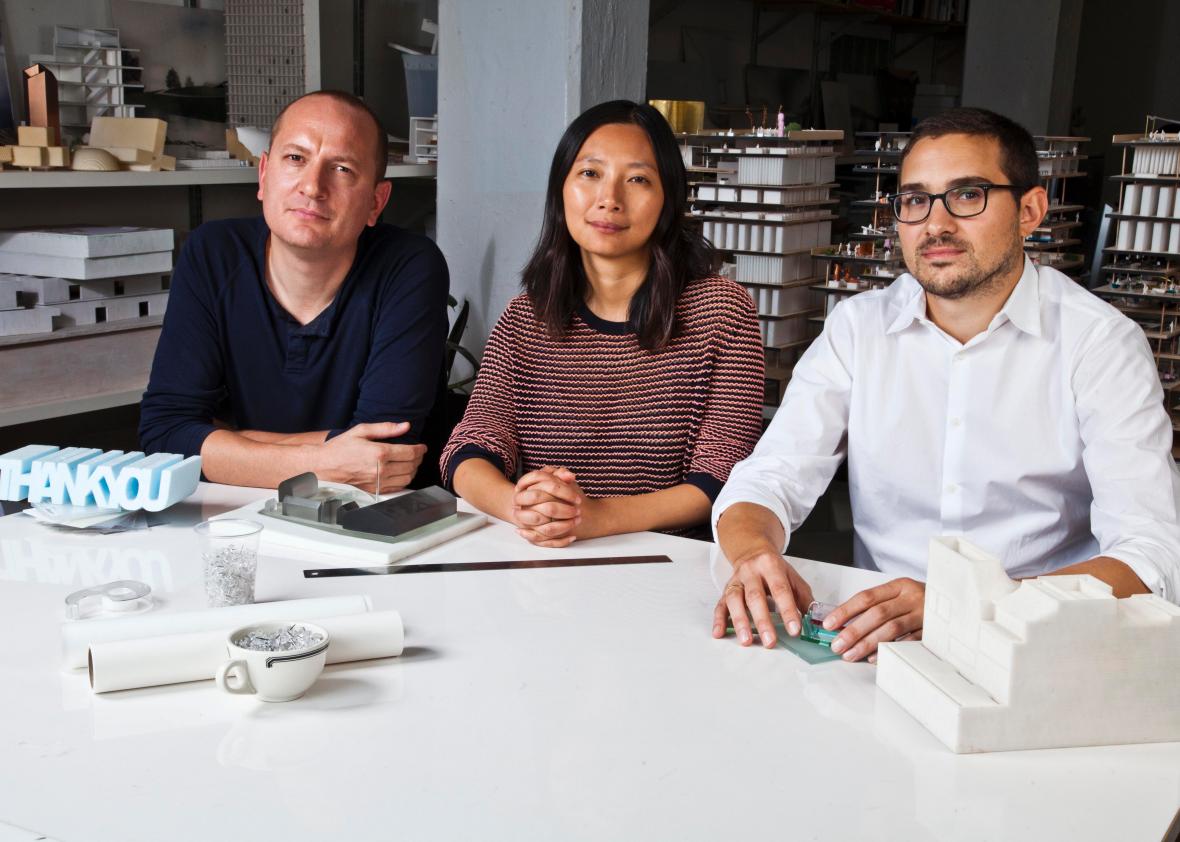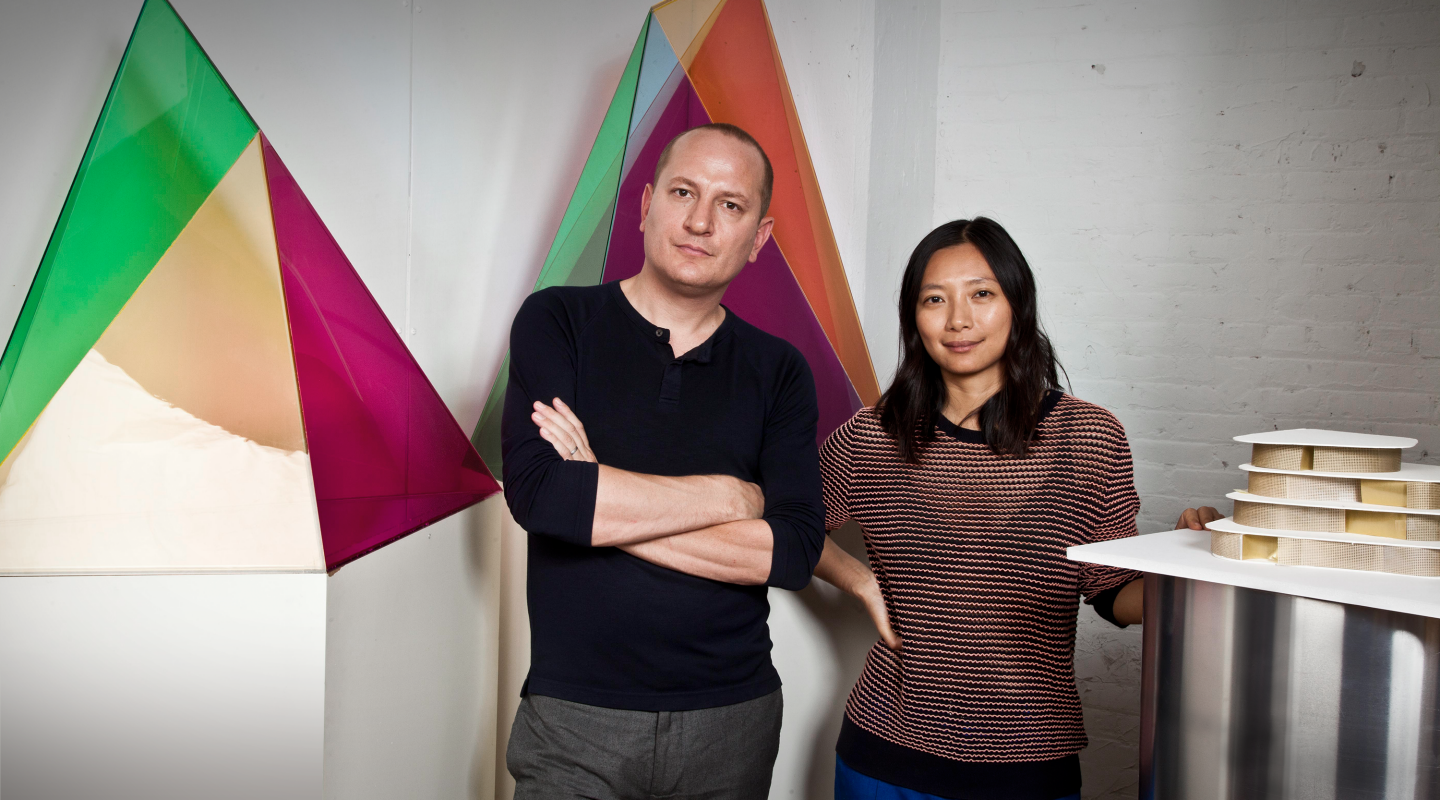
Remarkable Genius
SO-IL Harnesses Digital Connectivity to Redefine Modern Architecture
Sitting in their offices in Brooklyn’s DUMBO neighborhood, architects Florian Idenburg and Jing Liu are deep in conversation. Blueprints of their most famous structures—the Shrem Museum of Art in Davis, California and the Museum of Modern Art in Warsaw—decorate the walls, a nod to the overwhelming success their firm, SO-IL, has seen since it was founded in 2008. At first glance, this couple-cum-partnership could be discussing any number of things, from their two children to plans for an upcoming museum in Qatar. But no—these industry giants are talking about Pinterest.
“In the past, clients would come to you for ideas,” says Idenburg. “Now, we’re battling social media and blogs. Clients will share a Pinterest board with 400 different images of handrails. They are spending an incredible amount of time researching what they’d like to see, then asking us to incorporate their ideas. This is a new challenge for us.”

As SO-IL’s third partner Ilias Papageorgiou puts it, “The tech evolution has changed the way people experience architecture.” It’s up to leading talents like
SO-IL to usher their industry into modernity—something this nimble team is doing brilliantly, embracing strategies that maximize the positive attributes of media (the quick and efficient transfer of information) while avoiding the negatives (clients who question their vision).
Inspiration Is Everywhere
The worlds of art, literature and even fashion are frequent sources of inspiration for the SO-IL team. “I recently came across something that seemed not of our time,” Idenburg recalls. “A female architect, Aleksandra Kasuba, from the ‘60s and ‘70s. She also did this amazing fabric work that seems very contemporary again. I shared it with the whole office.”
But it wasn’t always so immediate. This past summer, the SO-IL team met a Portuguese architect who cited an architect from England as one of his influences. That English architect was actually influenced by an architect from Japan. It took 40 years for that transfer of ideas to take place —in SO-IL’s opinion, far too long. “It used to take decades, even centuries, for an idea to spread,” Idenburg says.

But today, as Papageorgiou points out, the Internet and digital media allow for increased “face time” with other architects around the world. Ideas spread quickly. “We’re all very much connected,” says Liu. “We’re part of one zeitgeist.” The result is an unfathomably deep ocean of inspiration that SO-IL looks to during the brainstorming process. As Liu puts it, “We’ll be inspired by a rendering we see on social media and become influenced by it right away. … The architects of today are being influenced by things that haven’t even been built.”
The Importance of Place
One of SO-IL’s most notable attributes is their ability to work around the world, incorporating the personality of a particular place into every project. If they want to pitch a building in, say, Moscow, this is how the SO-IL team will prepare: They’ll spend days watching movies about the city, “walking” its neighborhoods on Google Street View, and reading Wikipedia—yes, Wikipedia. Then, they’ll sit down for a brainstorm.
Why the ritual? To ensure they’ll create a structure that speaks for the setting in which it will live. “Context is really important to us,” Liu explains. “We want to make sure we understand the personality of a place. It comes down to a combination of research and actually being there.” Just look at the Museum of Modern Art in Poland—the result is a clean, modern building that fits seamlessly into the existing structure of the city. It feels very much like SO-IL, and very much like Poland.
The SO-IL Style
While their creations fit seamlessly into their native surroundings, it’s still equally important for SO-IL to have its own identifiable style. “That’s what keeps clients coming back to us and what makes people remember our buildings,” says Liu. There’s also another, more practical reason: “When someone approaches us, it’s because we possess the style they want,” she explains. Having a clear voice enables the SO-IL team to focus less on selling and more on what they do best—design. If a client is well versed in a firm’s style before making initial contact, the opportunity for disagreements is minimal and lead time—the six to 12 months of back-and-forth before contracts are signed and work commences on a project—is decreased.
The freedom to design what inspires them has allowed the team to be selective about the work they take on. “We’ve arrived at a level where we are regularly considered for serious and exciting projects,” Idenburg says. “So, it’s okay if we’re not the right match for a project. We’re not a company that needs to build every building.”
Preserving that freedom means making decisions that, in turn, preserve their creativity. “It takes five years for a building,” says Idenburg. “And the bigger the building, the longer it takes. Before agreeing to a commitment like that, you have to be sure it’s a project that excites you and a team you want to work with.”
A Fine Balance
Make no mistake: SO-IL’s ability to balance the personality of a neighborhood, city or space with their own vision is a feat not all architects can achieve. “When you ask Frank Gehry to design a building, you know what it’s going to look like,” Idenburg explains. “It doesn’t matter where it is or what happens in it, it’s going to look a certain way. At SO-IL, that’s not what we’re about.”
“We’ve always designed things that people find very forward-thinking, such as buildings that push the boundaries of our shared styles,” Idenburg continues. “The most important thing is that we’re modern, while keeping an open mind to new ways of doing things.”

